Wing Zreigat it is the most executive part; Oscar Engroba, the creative director. In addition to colleagues, they are friends and they get along perfectly creatively. Together they make up Astet, the multidisciplinary design studio that signed the interior design of Firewood, Dani García's steak house in Marbella, recently recognized as the most beautiful in the world, at the 2021 Restaurant & Bar Design Awards ceremony.
The duo located in Barcelona –in a cozy space next to Casa Bonay–, and that bases its work on finding a balance between the organic and the technical, seeking to improve the experience, is the great ally of the Dani García group: they are not only behind the Leña Marbella project, but also Leña Madrid, Lobito de Mar, Bibo Beach and Smoked Room Madrid.
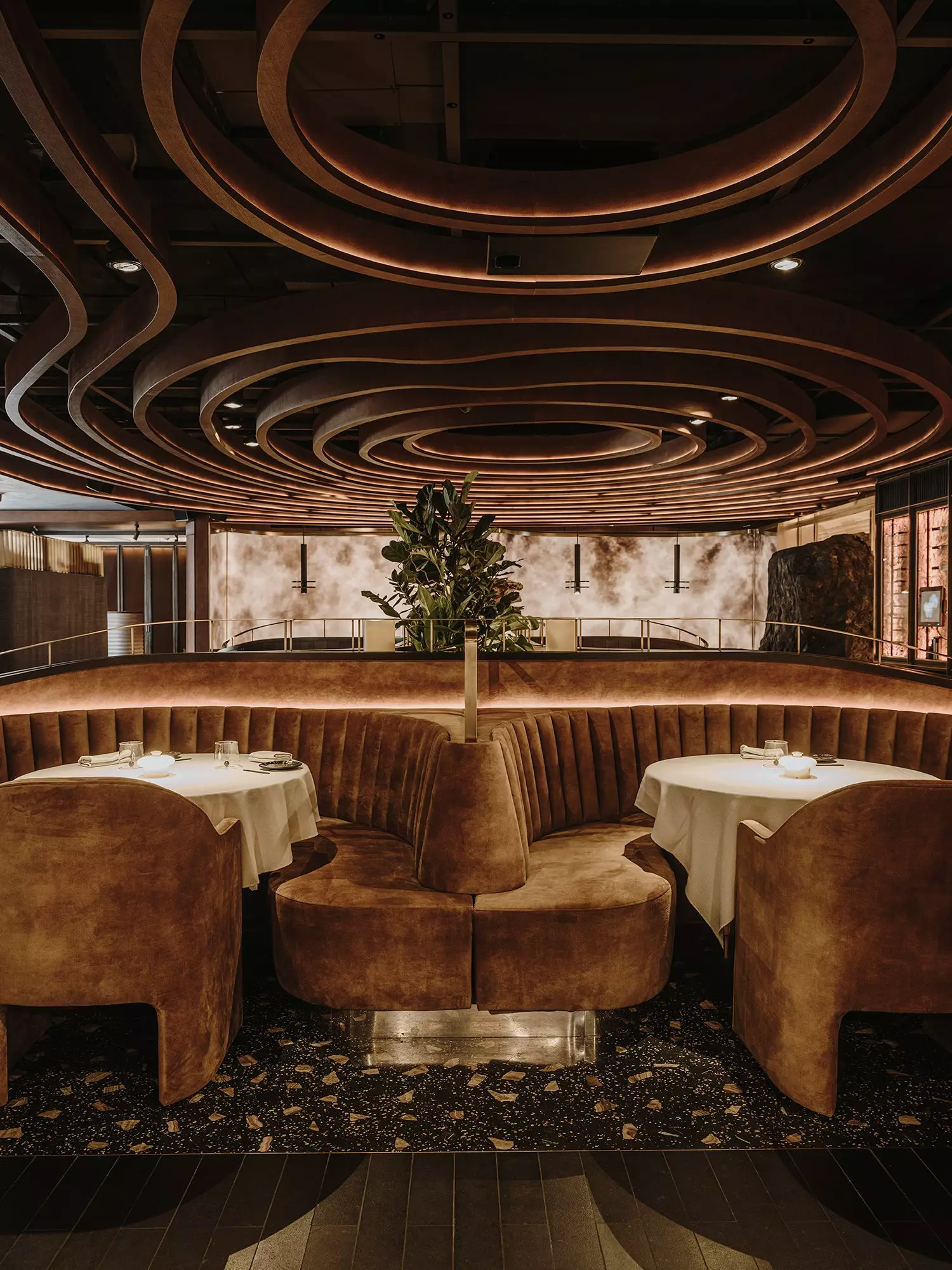
Leña Marbella Restaurant, the most beautiful in the world.
They both admit to being very foodies, and They maintain that it is in restaurants where they can develop their creativity more and better. “These are spaces where the experience, by definition, is short”, explains Óscar. “In a hotel they also try to transfer you to another universe but a longer-term environment is generated; the restaurant allows you to carry an ideology… not to the extreme, but in a certain way it takes you to another world in a short time”.
Of all their projects, Leña is obviously the one they are most proud of, but it is also the one that best defines them. "It represents the total balance of the whole -comments Óscar-, the balance between concept, gastronomy, light, furniture... Seeing the award, which we did not expect, we thought we had achieved it”.
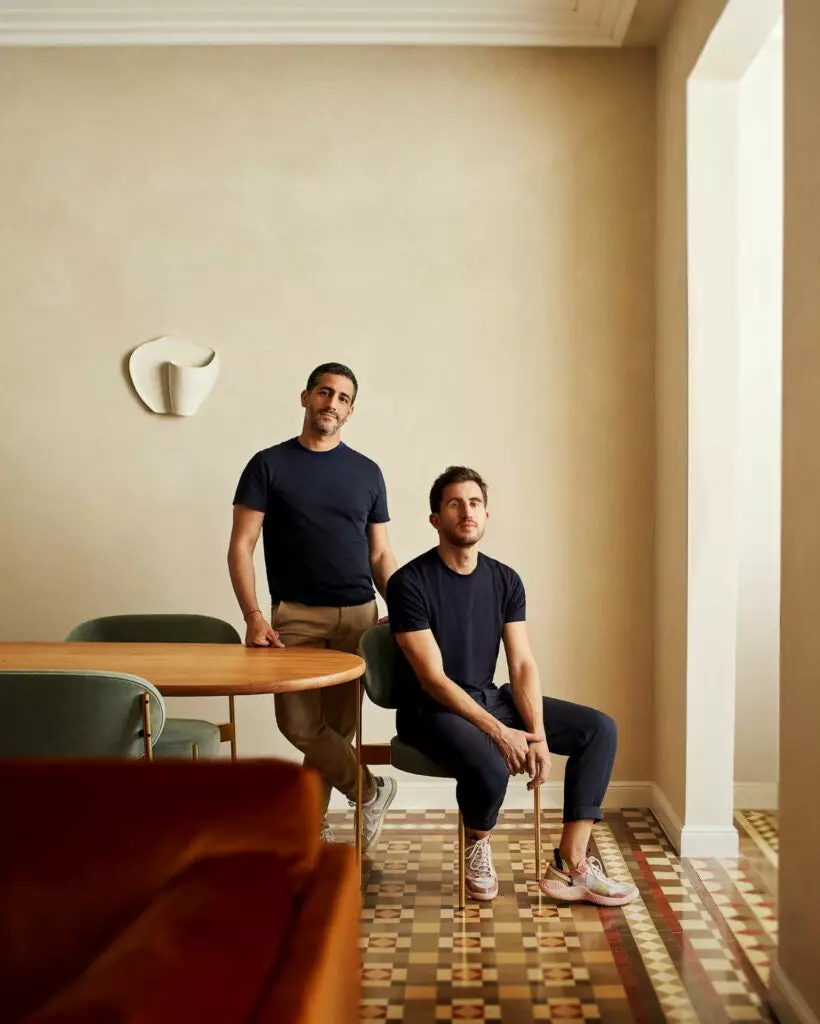
from left From left to right, Ala Zreigat and Óscar Engroba, from Astet Studio.
Óscar, born in Galicia, is an interior designer and architect, and has worked in cities such as London and Marrakech; Ala is Jordanian and also an architect, and moved to Barcelona in 2010 after working for a time in the Middle East, and he is in charge of establishing fluid communication between the studio and the client.
“As a result of a project that arose in Lisbon we decided to undertake this adventure together, which has had different names until it became Astet. We realized that what we were doing at that time was not authentic, we wanted an identity”, Oscar tells Condé Nast Traveler. The studio has recently worked on various international projects such as Lobito de Mar in Doha and Ham House in Shanghai , and also in the Taiga and El Pibe restaurants, in Barcelona.
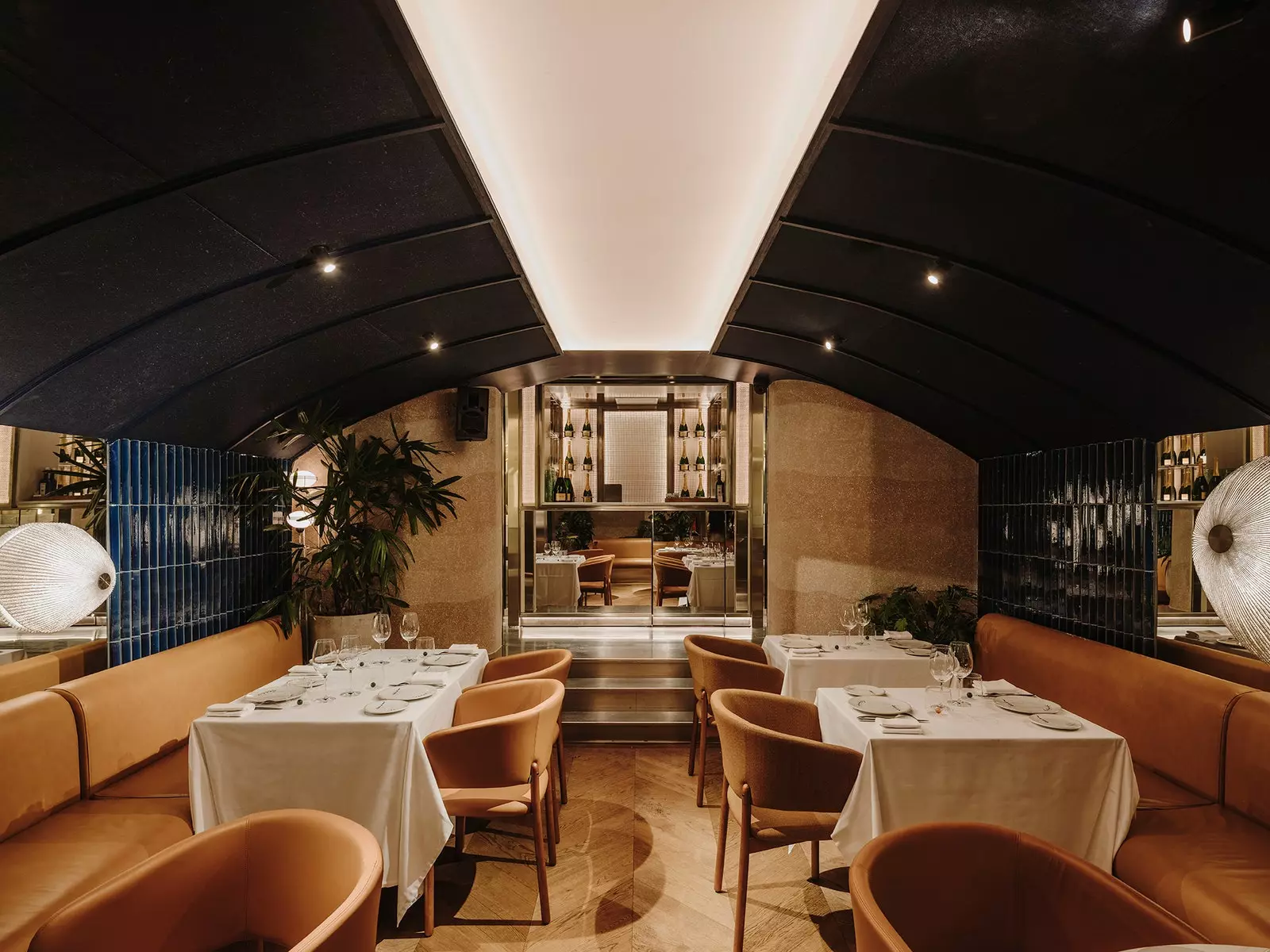
Lobito de Mar restaurant.
Also with the Dani García group, they will open in a few days Babette, who recovers forgotten traditional dishes giving them a reinterpretation and modern nods, and they have followed this idea for interior design, recovering, for example, the plaster moldings on the ceilings. "We wanted to recover shapes, the wood tones of other times... playing with these references. For example, there are fabrics that look very classic but you look closely at the motif and they are snakes”.
Does the fact of being located in Barcelona give them a special identity? "Not necessarily, we feel very international," they reply. They travel a lot, of course. To the interview, which we conducted by Zoom, Óscar comes just arrived from Marbella, and for his part, Ala just flew in from… “Where was he from? Oh yes, Mallorca”, he says between laughs.
“We travel a lot, yes, and we like it. Right now we feel very fortunate to have projects in all parts of the world”, he adds. “We are working in Bogotá, Shanghai, Milan, Dubai, Miami, Kuwait… In Spain we only have four or five projects, the rest all abroad. That is also due to the diversity of our team. Between all of us we speak five languages.”
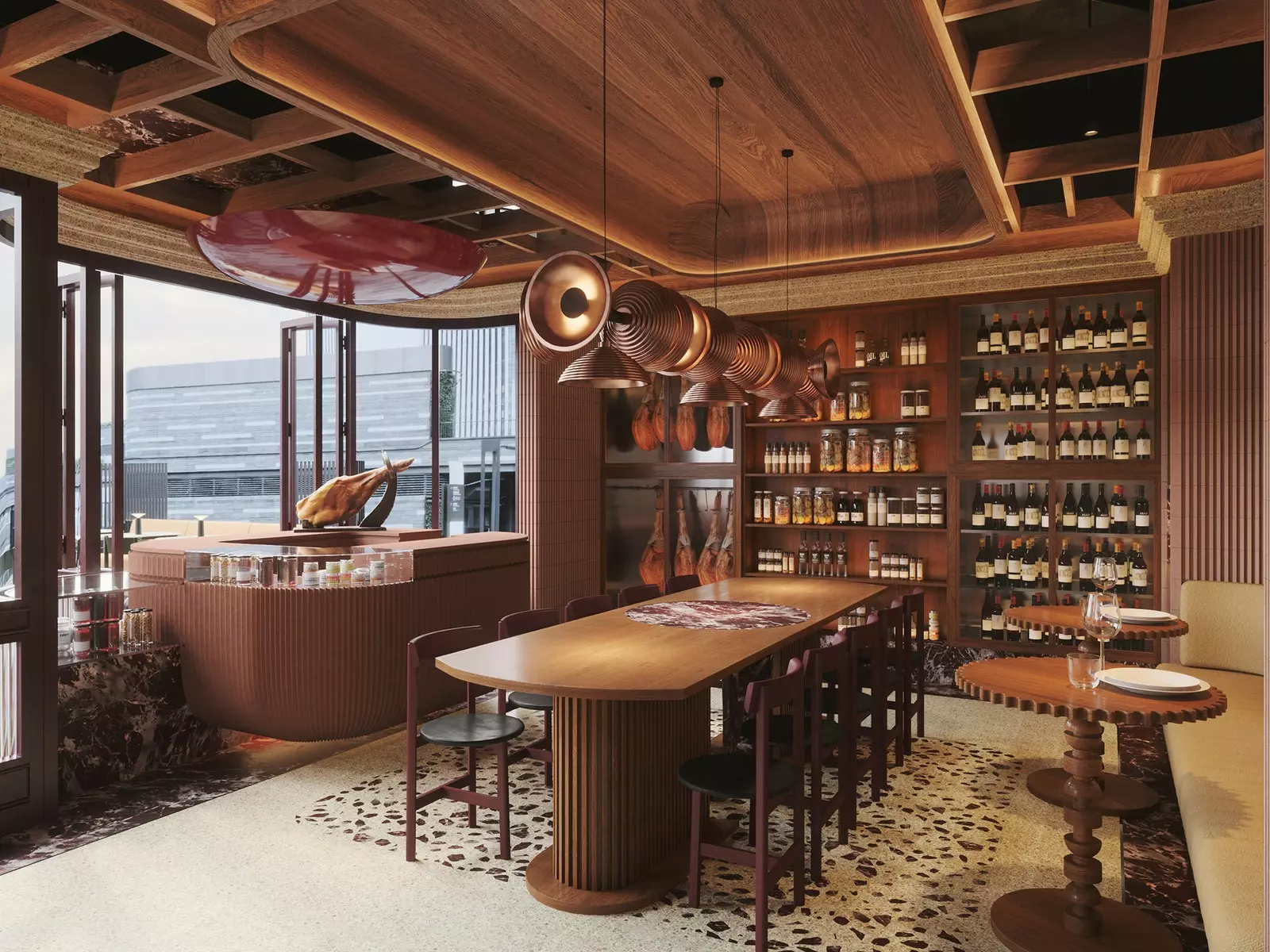
Spanish Gastrobar designed by Astet in Shanghai.
Asia is possibly the preferred destination of both: "I have traveled the Asian continent and it has many cultures that give you different ways of understanding life," says Óscar, who admits the influence of these trips on his work. Ala adds that he is passionate about Brazil and Chile. “I really like the energy of Latin America and its food!”
Do they approach projects differently depending on the country? Óscar replies: “In some details, yes. In Kuwait, for example, they understand restoration differently than in Spain or Shanghai. Sometimes the way of sitting at the table changes, the concept of the bathrooms... surprising things. They like very elaborate tables that reflect the category of the restaurant. But on an aesthetic level we have freedom and we adapt to what the client wants. And there is always a common thread: authenticity, a concept that links everything”.
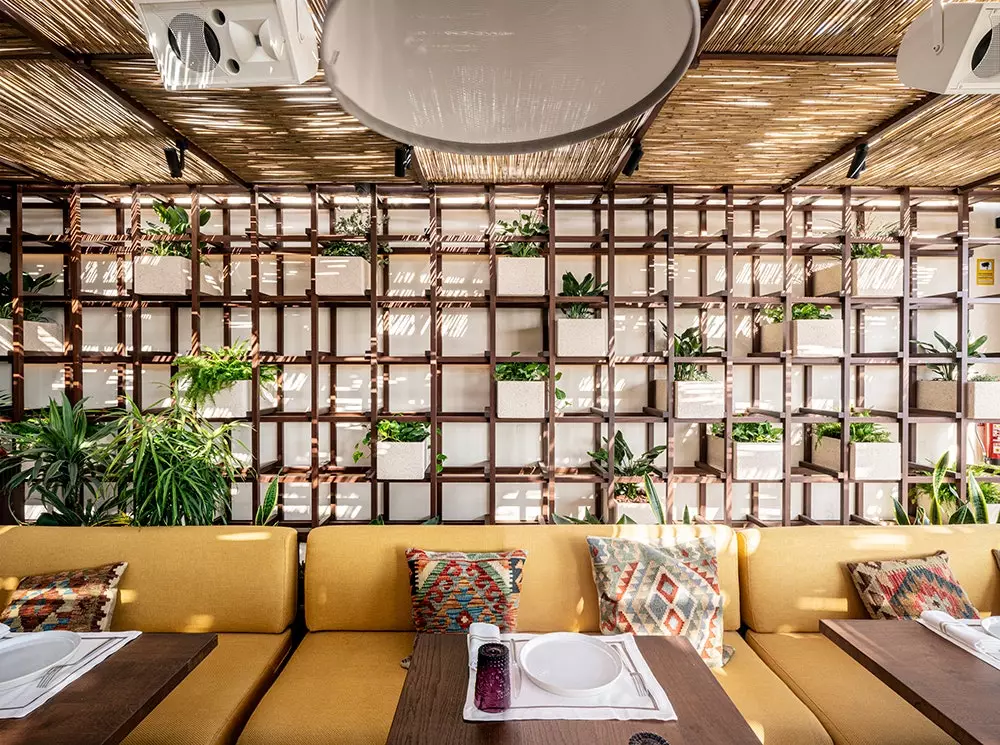
Bibo Restaurant, another of his projects.
In addition, they always keep in mind a balance between tradition and modernity, mixed contemporary elements, custom designed pieces… and all without losing sight of functionality. There are many factors that intervene when the result in the decoration of a restaurant is perfect.
“For one of our next works we have designed lighting, furniture and even an exclusive fabric, in which we have collaborated with a designer. The approach for us always has to be holistic.” Wing finishes.
THE KEYS TO A GASTRO-AESTHETIC EXPERIENCE TEN
When they are given the outline of what a restaurant will be like, they think how they will transfer the emotion of the kitchen to the customer. “The idea, as we said, is that there is a concept that links everything, the space, the furniture, the uniforms, how the waiter interacts with the client. The global vision, we insist, is essential. When you arrive at a restaurant there has to be consistency”, hold.
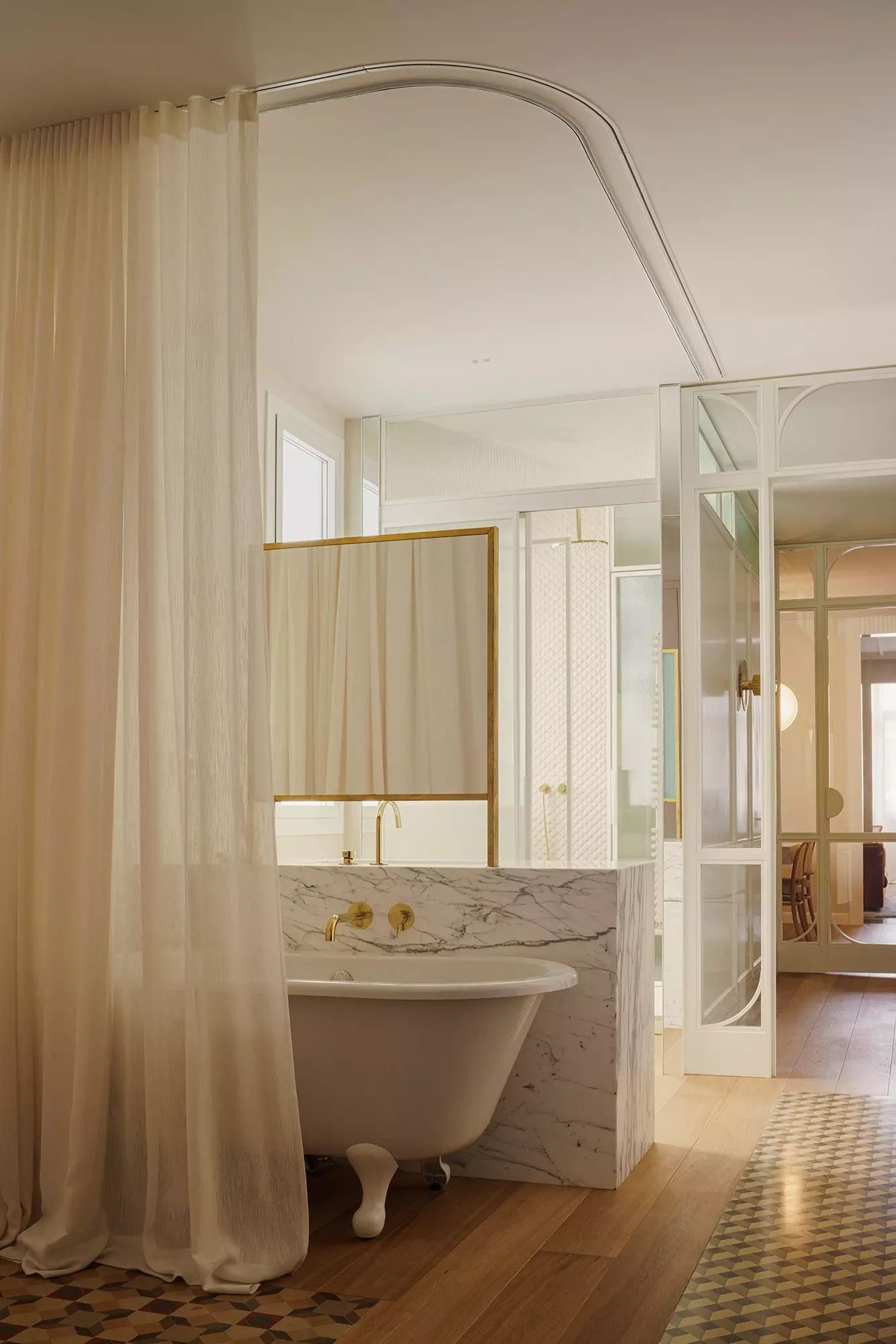
CC House, an interior design project by Astet Studio.
What would be the keys for interior design to contribute to a good gastronomic experience? “Lighting is important, distribution… We seek that, in some way, there is a certain perspective when you are sitting at any table, not that there is only one that is special or the best. May there always be interesting things to discover. That the furniture is successful, comfortable. That the materials convey an idea and that they are, at the same time, easy to maintain”, summarizes Ala.
And she adds: “We always try to talk to the chef, to understand his proposal, the design of the dish and how he wants to present the product. This greatly influences interior design. The level of gastronomic offer in Spain and throughout Europe is quite high, there is a great revolution. If the dish looks very different from the restaurant environment, this produces a dissonance in the diner. You have to understand this very well before launching into the idea”.
When asked if there is any trend that they love or reject outright… they joke around with each other. "We don't like when things are done without understanding why, when one piece or another is chosen simply because it's pretty, it doesn't work", says Ala, and Óscar emphasizes that "we shouldn't just fill up the space, we don't like the bohemian chic found in some places, there has to be a discourse behind it".
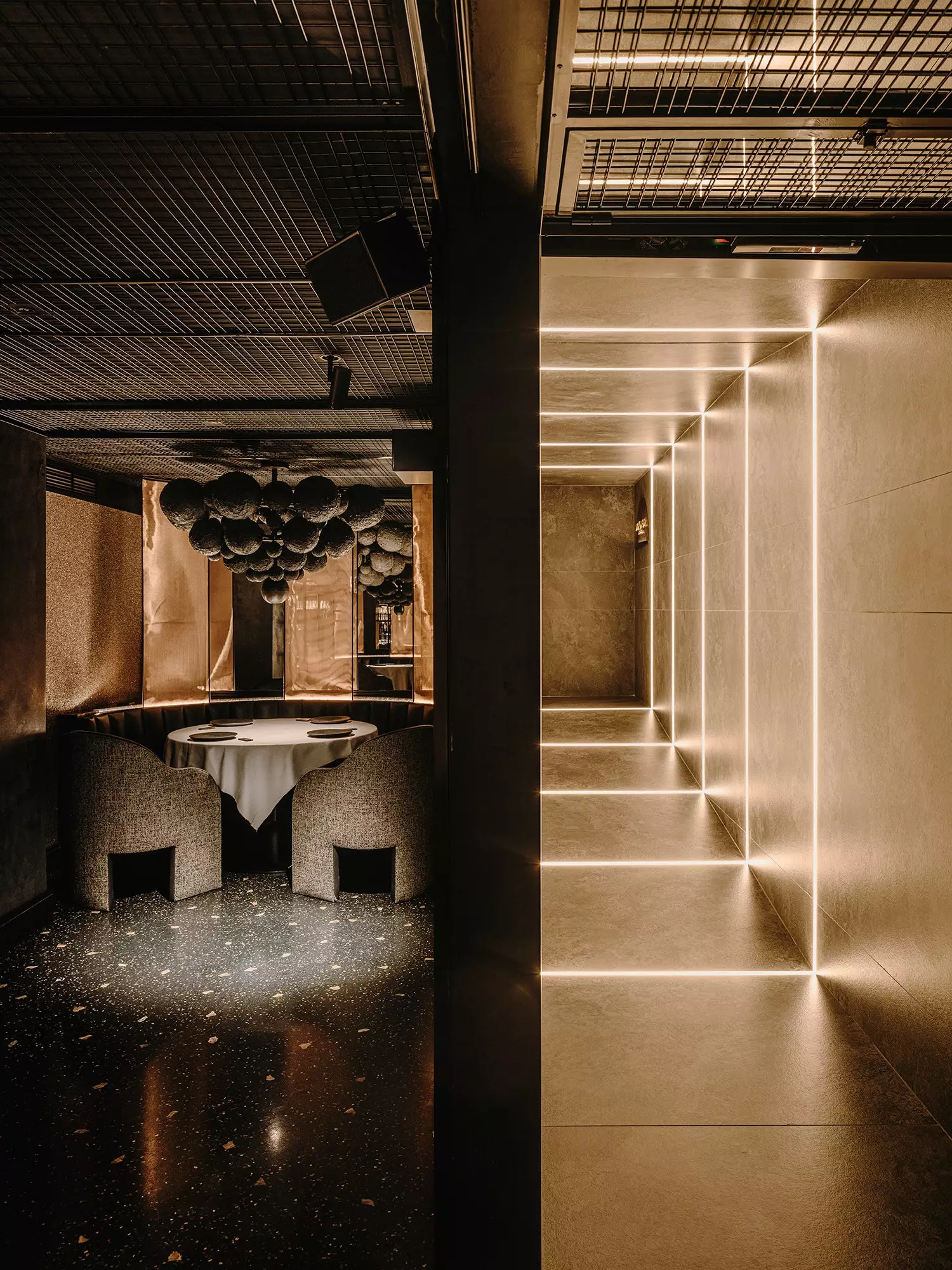
Smoked Room, another of Astet's interior design projects.
MORE PROJECTS (AND HOTELS AND RESIDENCES)
They are also working on the opening of two new hotels: Calada Beach House, located in Ericeira (Portugal), and the Mas d'en Bruno hotel, in the Priorat region. This second is a farmhouse converted into a hotel and dedicated to wine. “It is a luxury boutique hotel with 20 rooms, where there will be a restaurant with a quite exquisite gastronomic offer, a spa, a bookstore…”, they explain. They also have a pending collaboration with Albert Adriá in Barcelona, a concept around coffee.
Although it is not their priority, they also work in private residences. In Malaga we find Villas Ojai, a project that sought to capture the essence of Andalusian architecture. The team is now working on three other private residences, trying to capture the essence of their owners.
They are optimistic about the future. “I think that, after the pandemic, people want to live and that enthusiasm is transferred to many projects at the local level of restaurants, hotels… where people can interact and live new experiences”, says Óscar. Something change? "I think so," he says, "on the one hand we have become aware of our humanity and fragility but also we have recovered the importance of enjoying every day”. Ala adds: “It also influences how we approach projects. The idea of the buffet, for example, is more questionable”.
“During the pandemic they asked us for more distance between the tables and now, suddenly, they have changed the chip and they do not care that the tables are closer together – Óscar adds -. I think we're more focused on savoring the moment."
